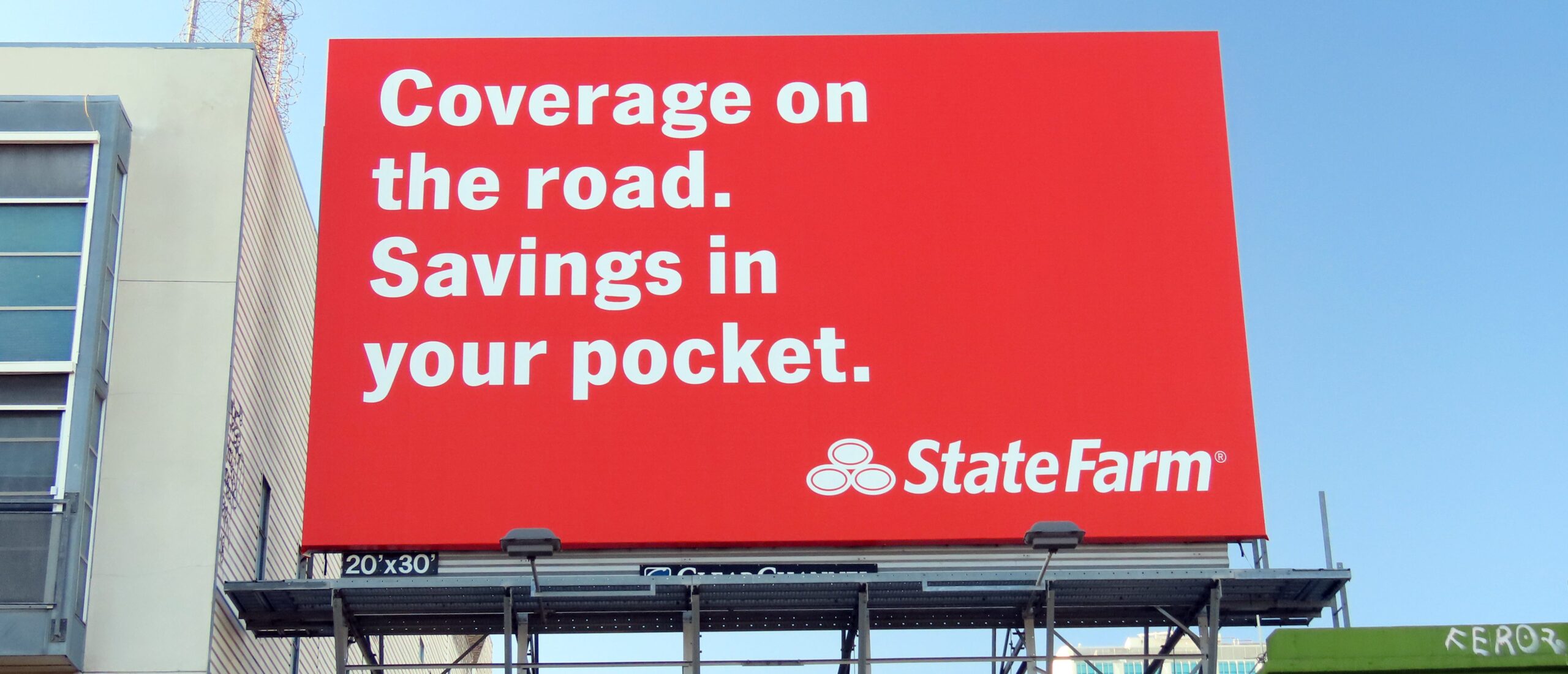
While the explosive growth of digital channels has largely left traditional media diminished, OOH has been the exception and just posted its 40th consecutive quarter of growth (up 7% in Q3 2019). While the explosive growth of digital channels has largely left traditional media diminished, OOH has been the exception and just posted its 40th consecutive quarter of growth (up 7% in Q3 2019).
OOH’s acceleration appears poised to continue, as MAGNA projects overall ad spend to grow 6.2 percent in 2020. MAGNA reported a healthy economic environment in the first three quarters of 2019 drove increased spend from several key verticals including finance, retail, travel, while tech giants and DTC brands continued to expand marketing budgets.
These same three verticals are reflected in OOH’s success, the FAANG suite of companies is among the top 30 OOH spenders in 2019, and D2C brands understand the impressive results OOH can deliver by producing rapid awareness and social media fame. Casper, Brooklinen, Hims, Dollar Shave Club, Keeps, and others have spent millions in OOH this year.
The effectiveness OOH delivers for these verticals, and D2C, in particular, is no surprise given recent research findings. OAAA-sponsored research from MRI/Simmons found consumers with the heaviest OOH viewership over-index above the US population on the usage of mobile phones. They also reported OOH viewers show high indexes in these key behavioral and product categories:
- search engine and social media use
- shopping purchases
- banking
- airline/car/hotel information and reservations
Other product verticals are significant components of OOH’s rise:
Cannabis has produced rocket-like growth in OOH. Kantar estimates OOH made up almost half of the category’s ad spend in the first eight months of 2019.
Political spend hit a record in 2018, and the trend looks promising.
The insurance category has shown exceptional strength in 2019, with 27 percent growth over 2018 through the third quarter. State Farm was the top OOH spender for the third quarter, and Geico was number two, while Allstate, Progressive, and Blue Cross & Blue Shield were all in the top-35 list.
Reaching the Mobile Consumer
OOH’s massive reach in an age of audience fragmentation is the cornerstone of its success. OAAA-sponsored Nielsen research found OOH reaches 90 percent of travelers ages 16+ in a month and 80 percent of them in a week. Consumer mobility is at an all-time high with record miles being driven on US roadways, record levels of airline passenger travel, and near-historic highs of transit ridership. It all adds up to more OOH viewers.
OOH ads, which cannot be skipped or turned off, serve as prompts and triggers that drive consumers to their mobile devices and retail locations. The Nielsen study found 66 percent of smartphone users took some type of action on their device after seeing an OOH advertisement in the past year, 42 percent searched for an OOH advertiser, and 39 percent noticed directional OOH ads.
The importance of the synergy between OOH and mobile cannot be overstated, as MAGNA projects mobile ad spend will surpass total traditional media spend in 2020. The synergy between the two channels flows readily into social media, too.
A 2019 study from Facebook underscored the power of OOH to augment media spend on the social platform. They found adding a combination of OOH and Facebook advertising to a media mix can help campaigns reach broader, younger audiences.
According to Facebook:
“With the widespread use of smartphones, the high visibility of out of home goes hand in hand with actions on digital channels such as social media. For example, nearly 4 in 10 adults surveyed (38%) in the US say they have visited a Facebook Page or posted on Facebook after seeing an OOH ad, and 25 percent have posted to Instagram. When comparing different approaches, using both Facebook and OOH ads worked best – with the combined impact proving to be 13 percent more efficient than expected.”
While the Facebook study was done in Europe, it replicates findings of the OAAA/Nielsen study of online activation that revealed OOH was more effective than TV, print, radio, and banner ads in driving search, Facebook, Twitter, and Instagram activity.
OOH’s flexibility is another major success factor driving the current growth cycle. Digital OOH, which allows immediate updates of ads, is the fastest-growing segment of the industry and now represents about 30 percent of total OOH. Digital is growing across all OOH formats, and this expansion opens the medium to even greater growth potential through programmatic channels.
MAGNA’s most recent projection for OOH was a five percent increase in 2019, and it looks likely OOH will outperform market expectations. Once again, unlike other traditional formats, they also project increases for OOH through the end of their projection cycle in 2024. It’s a great time to be out of home.
Published: November 25, 2019